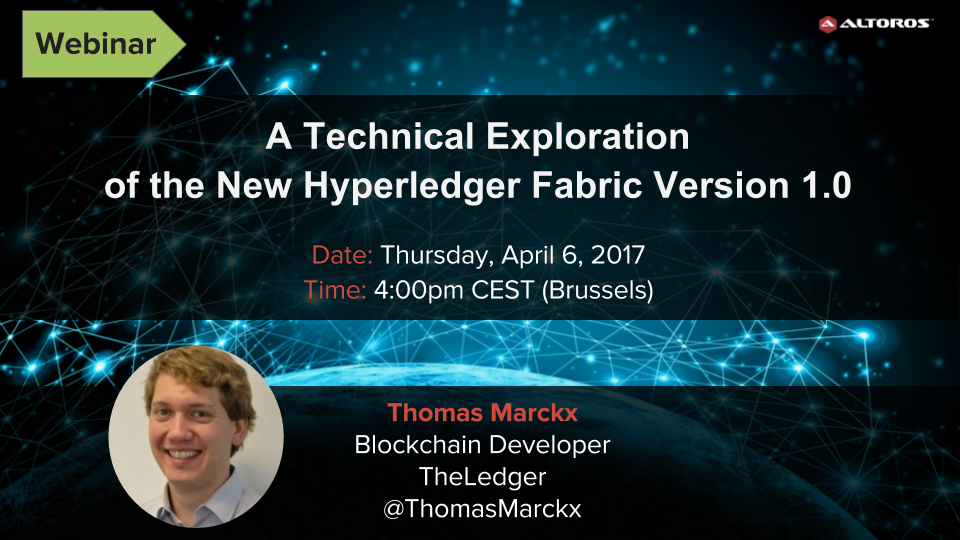.
In this webinar with guest speaker Thomas Marckx, we will explore the new architecture of Hyperledger Fabric V1.0, how it’s different from V0.6, and what it means for the future of private blockchains.
We will get an in-depth overview of Fabric, one of the open source blockchain projects under the Hyperledger umbrella. In particular, we will explore the oncoming v1.0, its first commercial-grade release.
We will learn the best practices for developing blockchain applications using Fabric 1.0, see how to get started and write a smart contract in Golang.
Agenda:
This is the second webinar with Thomas Marckx. The previous session was a deep dive into Fabric v0.6, privacy and consensus mechanisms, and the plans for new architecture. To get prepared, you might want to watch the replay of the first webinar, or read a blog post.
Who should attend?
This webinar will be of interest to enterprise architects, innovation managers, IT consultants, developers and leaders of teams who know the basics of blockchain technology and want to learn how Hyperledger Fabric works.
About the presenter:
Thomas Marckx is Blockchain Developer at TheLedger.
After working as an IT-consultant in the financial sector for a couple of years, Thomas shifted his focus to newer distributed technologies. He currently works as a blockchain developer for Optis, which is part of the Cronos Group.
Thomas is also co-founder of TheLedger, a Belgium-based blockchain consulting company. Distributed networks—which blockchains are—offer solutions that can help businesses to scale faster, automate their business processes and lower their transaction costs. TheLedger helps companies understand and implement blockchain solutions.
